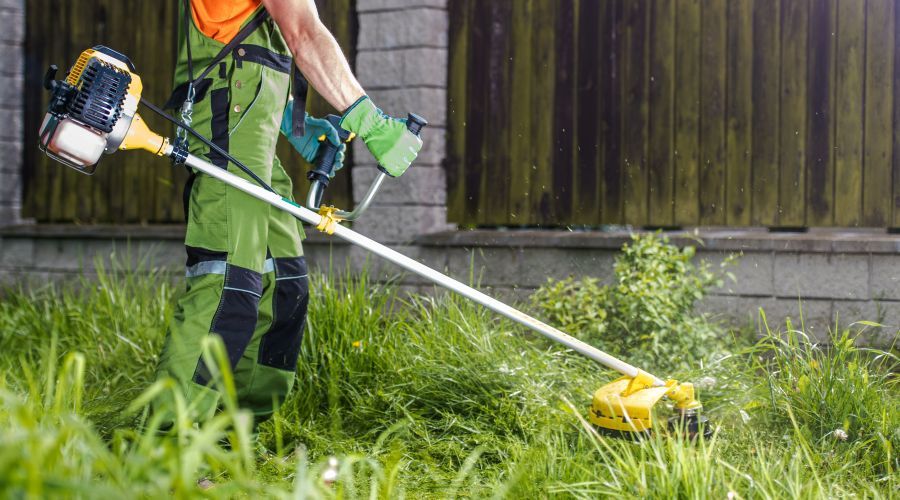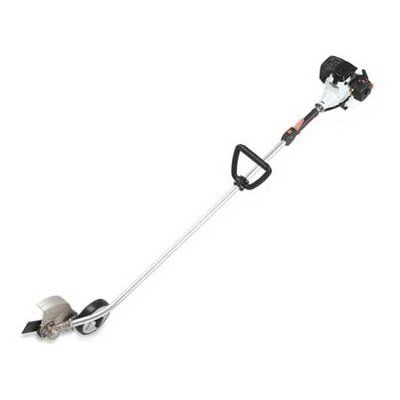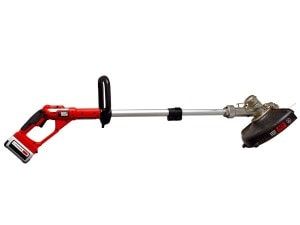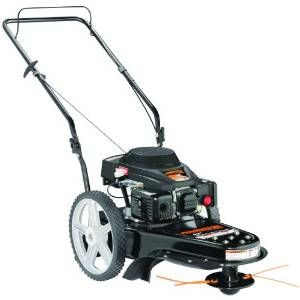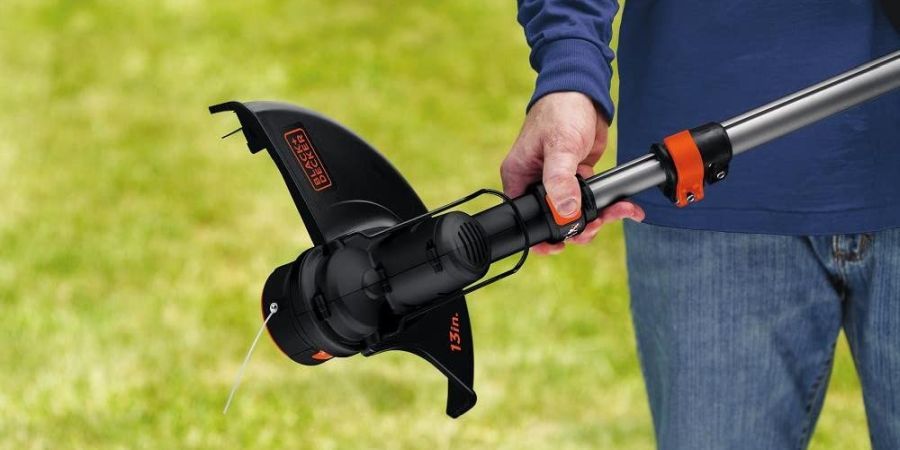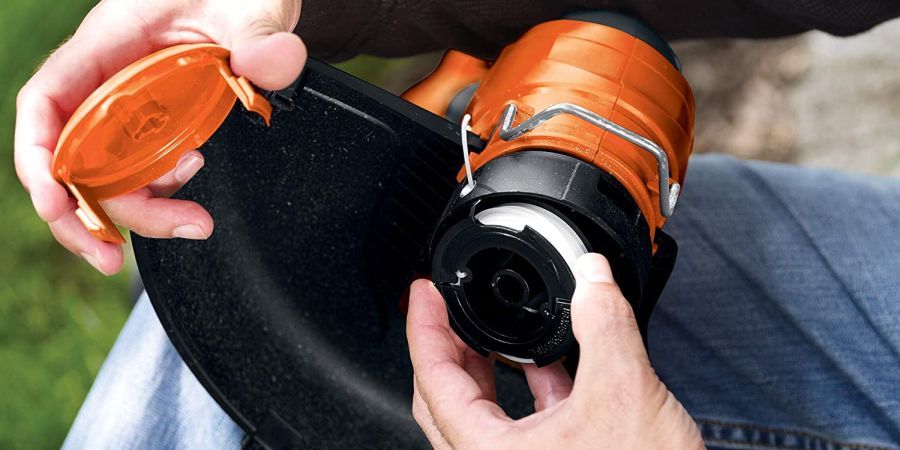Weed eaters, also known as string trimmers, can tame your garden where your mower won't reach. If you're longing for a meticulously manicured garden, you absolutely need one of these tools.
We've cut through all available electric and gas-powered grass trimmers varieties to bring you the best models on the market right now. Read our reviews and tips below to find the perfect weed eater for your property.
Backyard Boss Top 5 Weed Eaters for the Summer of 2021
|
PRODUCT |
FEATURES |
||
|---|---|---|---|
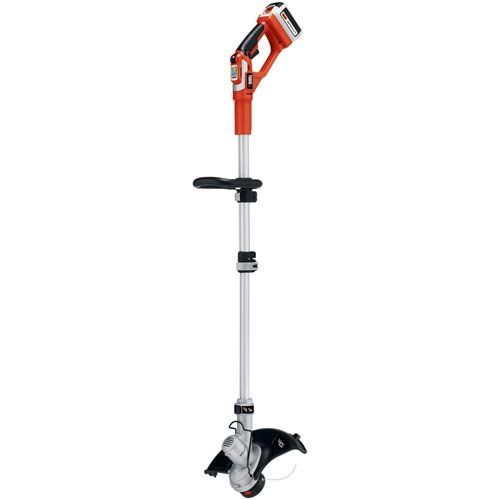
|
|
||
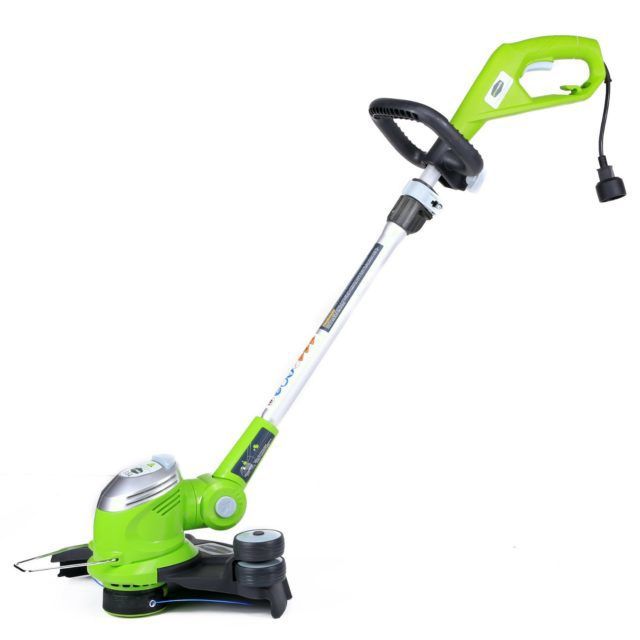
|
|
||
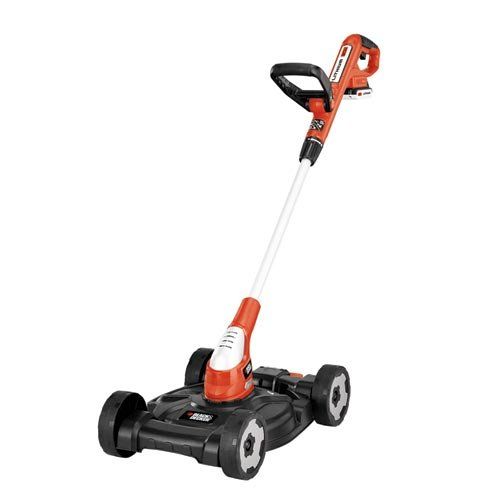
|
|
||
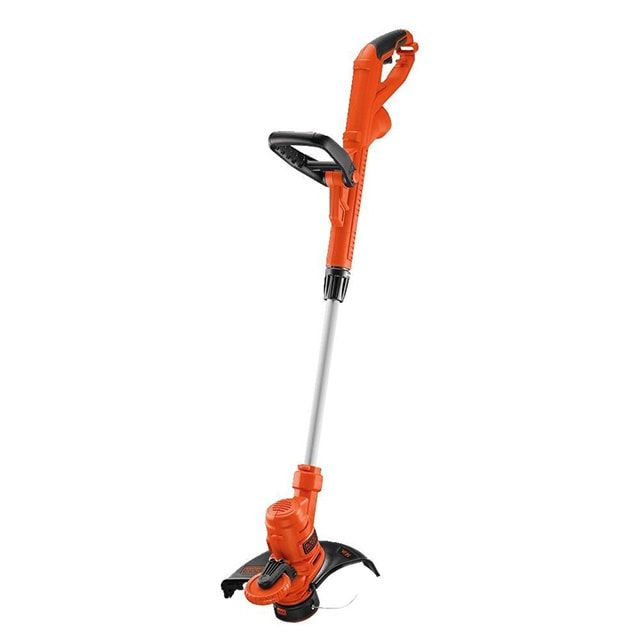
|
|
||
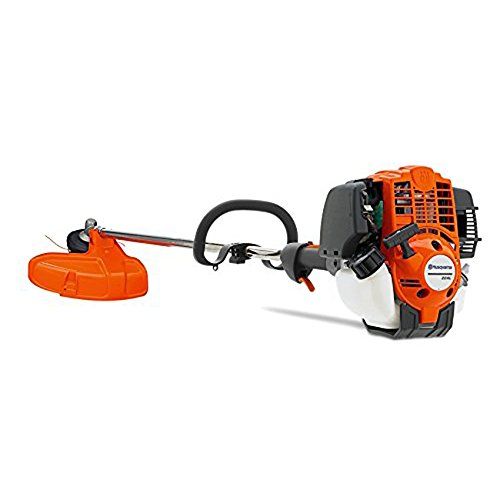
|
|
Best All-Around Weed Eater
This dual power mode weed eater doubles as an edger and runs on either 36V or 40V batteries.
- Works with 36V and 40V Lithium-ion batteries
- Power-saving mode
- 3-year warranty from the manufacturer
- Not as powerful as a gas-powered unit
|
|
Why We Like It: One of the best weed trimmers on the market is this cordless electric weed eater from Black and Decker. The unit comes with a Power Drive transmission, standard-issue, which yields superior power output for a battery-powered motor, resulting in improved grass cutting performance as compared to other similar offerings.
There's also a Power Command dial that lets you choose between operating the weed eater on maximum power mode, for cutting through super tall and thick weeds, and maximum runtime mode, to conserve the unit's battery life.
The weed eater sports an auto-feed spool that ensures uninterrupted work minus the constant stopping, bumping, and spool adjusting. Impressively, the LST136W can also convert from a trimmer to an edger, through a simple shaft twist. It has a 13-inch cutting diameter, which is great for trimming overgrowth along borders, flower beds, and sidewalks. It also works with a 36V Lithium-ion battery or with a 40V Max Lithium-ion battery.
Best Corded Weed Eater
The GreenWorks weed eater lets you cut through grass and weeds with ease, while automatically feeding new line and alerting you before it runs out.
- Automatic line feed system
- Weighs only four pounds
- 4-year warranty
- Limited by the length of the cord
|
|
Why We Like It: The GreenWorks's 5.5 Amp, 120V motor ensures effective cutting through even the toughest of weeds and thick tall grass. Furthermore, the corded electric weed eater comes with an impressive automatic line feed system, which even indicates when new string is required.
The handle of this weed eater rotates 180-degrees which means you can use it to quickly and easily trim around flowerbeds, sidewalks, foundations, and driveways. That said, the diverse shaft is also adjustable, which we love. That means even if you are shorter than the average bear, all you need to do is change its height to suit better suit your needs.
Best Cordless Weed Eater
Fitted with Black + Decker's automatic string feeding system, designed as a three-in-one design, and shipped with a backup battery, it doesn't get much better than this.
- Three in one design - trimmer, edger, mower
- Automatic string feed system
- 2-year manufacturer warranty
- More expensive than a basic cordless weed eater
|
|
Why We Like It: Geared towards small yards and gardens, this innovative 3 in 1 trimmer, edger, and mower from Black & Decker packs three separate functions into one unified, compact piece of outdoor power equipment. It has a low carbon footprint and a design which makes it an excellent string trimmer, edger, and mower for homes that have smaller yards with sloped hillsides and difficult to reach places (like under decks, trees, and bushes).
Because of its versatile multitasking capabilities, we feel it is one the best string trimmers for the money. If there isn't a lot of room in your garden shed or garage to store a bulky weed eater, this could be the perfect choice for you as well. Even more, it comes with the same great auto-feed system and power drive transmission that nearly all Black & Decker weed eaters include.
The adjustable height and pivoting handle also ensure that it is much easier to handle than hard-vibrating gas-powered models. Plus, it comes with two batteries; one to weed whack with, and one to charge for an extended weed whacking session, or simply to keep charged and ready to go.
Best Trimmer and Edger Combo
The machine is great for use in places where mowers can't reach and for maintaining edges along sidewalks, driveways, flowerbeds, and more.
- 2-in-1 weed eater/trimmer design
- Barely weighs seven pounds
- 2-year manufacturer warranty
- The weed eaters work-range is limited by cord-length
|
|
Why We Like It: This Trimmer and Edger combination model from Black and Decker is a 6.5 Amp corded electric weed eater. The units build is one of the most ergonomic designs on our list. The weed eater is lightweight and highly versatile with changeable heights and a pivoting handle to boot. The various positions it is capable of providing superior comfort and control while working with it.
Its powerful 6.5 Amp motor and high torque transmission yield optimum performance when you need to cut away the toughest of grass, weed, and undergrowth. The famous Power Drive transmission ensures that the weed eater doesn't get bogged down by weeds and heavy grass, as comparable units do.
Further, this trimmer and edger combo model operates with an auto-feed spool. Perhaps the most impressive feature about this convenient 2-in-1 design is that it quickly and easily converts to an edger, and its Smart Edge mode gives a greater degree of accuracy and control to you as well. That means you will create cleaner cuts and straighter edges.
Best Straight Shaft Weed Eater
This versatile gas-powered weed eater comes with a blade kit and breaks down into smaller parts for easy storage.
- Converts to pruner, edger, and more
- Smart-start feature + blade kit
- Not as heavy as other gas weed eaters
- May be more expensive and versatile than you need
|
|
Why We Like It: This Husqvarna gas-powered weed trimmer has a compact engine designed for powering a host of commercial attachments such as edgers, trimmers, and pruners. That is why it also includes a blade kit with the purchase as well. This weed eater perfectly fits Husqvarna's profile of quality, reliability, and proven performance.
The Husqvarna works best for small to medium-sized lawns and gardens and is versatile enough to handle all of your trimming needs on larger properties as well. This model has a "smart start" feature designed to ease the starting of the gas engine; something that gas-powered trimmers are notorious for. Further impressive, the weed eater boasts a twin line cutting mechanism fed by a tap and go feed system as bigger units do.
The shaft is detachable without any additional tools required, so you can easily take it apart and store it whenever you want. The air purge feature rids the fuel system and carb of air and further improves the smart-starting capability of the trimmer. To top it all off, there's a comfortable handle and a safe throttle handle with a top switch present just under the user's thumb which makes things even more convenient for you.
Types of Weed Eaters
Gas
Most weed eaters are gas-powered. They are the ideal choice for dealing with weeds, tall grass, baby trees, shrubs, and even brush. Most gas weed eaters have a weight of around 10 to 15 pounds though, making them heavier than electric corded and battery-powered versions.
The newest models are very much eco-friendly. However, gas-powered weed eaters are the loudest, vibrate the most, and cost the most to purchase and maintain, requiring regular tune-ups and oil changes.
Electric
Corded weed eaters, also commonly referred to as electric models, tend to cost less than gasoline or battery-powered models (which are also known as electric weed eaters). These trimmers tend to weigh approximately five to ten pounds, depending on the make and model.
Another great advantage, aside from never needing to be fueled up with gasoline and oil, there's also no need for tune-ups either. That said, getting one started is done via the simple press of a button. Plus, they're quieter than the gas-powered weed eaters.
However, electric weed eaters do have a downside as well. They are limited by the length and integrity of the power cord. At any rate, they are one of the most eco-friendly trimmers you can buy.
Battery-Powered
Cordless, or battery-powered weed eaters, for the most part, are powered by lithium Ion or NiCd batteries. That means they come with the distinct advantage of being completely portable.
Even more, they produce zero harmful fumes and require no priming or pulling to start. Simply press a button and your strings are whirling and weed whacking speeds.
The latest versions have commendable performance, but they still can't beat the gas and corded models when it comes to tall weeds and grass. They also tend to be heavier than corded models and will run between 20 to 50 minutes before requiring a recharge; that can take anywhere from half an hour to several hours. Perfect for your average urban yard.
Commercial
The best commercial weed eaters can deal with thick brush and shrubs just as well as weeds and grass. Even more, they are also compatible with an array of other attachments that make multi-tasking with one tool possible.
Commercial weed eaters also work great in both small and large yards and are highly durable. They'll work continuously for a longer period of time than residential weed eaters as well. That said, nearly 100-percent of commercial weed eater models are gasoline-powered.
Wheeled or Walk-Behind
Walk-behind, or wheeled, weed eaters are a mixture of string trimmers and lawnmowers, and that's probably because they're a little bit of both. Wheeled weed eaters are diverse pieces of outdoor power equipment that are easily capable of dealing with unyielding weeds and tall, thick grass.
In addition, they are ideal for rugged terrain that a regular mower can't handle, or for vegetation that is too thick to be dealt with using conventional weed eaters.
Wheeled weed trimmers tend to have large wheels that make them more maneuverable on uneven surfaces. Their wheels comprise of hard plastic or a Never Flat material which will never get a flat tire while working on rough ground. Their cutting width is also considerably larger than standard trimmers so they'll cover more ground in one go too.
Some walk-behind weed eaters are designed to replace the lawnmower completely, as a stand-alone unit. Others are made as an attachment for mowers or made to transform into lawnmowers. Wheeled weed eaters work excellent for seniors or folks with smaller yards to maintain.
Types of Weed Eater Heads
There are numerous weed eater models with high-tech, technical-sounding names, but all of them can be divided into three basic categories based on their line feed design.
Bump Feed
Weed eaters with bump feed systems utilize variable lengths of line that wind around the trimmer spool. The design features two equal lengths of string fed through openings built-in into the trimmer's head. The bump feed requires you to give a light "bump" of the trimmer's bottom onto the ground every so often as you're trimming.
The bumping action feeds additional lengths of string out of the head. This type of feed system is reliable and easy to use. In fact, it is also the most common type found on weed eater today. The bump feed is a simplified technique derived from string advancement. Further, if your weed eater runs out of string, it is easily restrung, right there on the spot.
If your bump is excessively forceful, though, you may end up damaging the spring/coil inside or the spool itself. Long-term, it will eventually wear the head down. That means at some time, if you plan on keeping this unit for years to come, you will need to replace the head at least once.
Automatic Feed
Lots of weed eater designs today include automatic feed systems. These are similar to the bump feed mechanism we discussed above. The main difference is that automatic feeds utilize a line spinning motor rather than your manual effort.
An automatic feed allows you to focus your attention on the actual weed-eating job instead of having to check on the line every few moments. Since you don't have to tap the trimmer head, you can get the job done quicker too.
Just like with all other machines that have lots of moving parts, the motor might break down eventually. Replacing the automatic feed motor can become more of a bother than replacing the whole trimmer altogether!
Fixed Head
These systems utilize individual lengths of the line which are threaded or loaded into the trimmer, as needed, one at a time. This saves you from the trouble of winding the line onto the head and makes handling the trimmer line easier.
Fixed head systems are present more frequently in larger, commercial trimmers which come with thick, tougher string. The thicker string doesn't break or wear down as much either. That means you don't have to stop between weed-eating jobs to replace it.
That said, you'll still need to replace the trimmers line, from time to time because that is just the nature of the beast.
What to Look for in a Weed Eater
Now that we have discussed our favorite picks, as well as went over the types of weed eaters and heads, let's take a closer look at exactly what to look for in a weed eater for you and your specific needs.
Handling
Before you invest in a weed eater, aim to get some hands-on experience. The weight of the trimmer should be comfortable in your hands and not cause you to strain your arms, back, or neck. Some models are perfect for taller folks but are top-heavy for shorter people. So, if you can, try a few out first, even if you plan to purchase one online for a better price.
Safety
Weed trimmers can stir up quite a bit of debris. So, to avoid hurting yourself, think safety. That means you need to wear safety goggles, gloves, boots, and long pants. With the exception of cordless electric trimmers, most weed eaters operate at a minimum of 85 decibels, a pretty high noise level. You may want to use some form of ear protection as well.
Gap
Weeds and tall grass can wrap themselves around the weed eater's head, slowing it down or even stalling it out completely as a result. This is especially true of units that have a considerable spatial gap between the head and the mounting for the string guard.
Weed eaters with smaller gaps or a protective sleeve around their shaft will generally not have this issue though. That said, careful practice will help you avoid the issue regardless of the gap size.
Fuel Type
Again, there are three main types of weed eaters out there on the market; gas, electric, and battery. Choose which fuel type you prefer wisely, each one has its pros and cons, which we discussed in more detail above.
String or Spool Type
The spool type matters a great deal as it has a tremendous impact on the overall ease of use that your weed eater will have.
The type of string, and most importantly, the length and thickness of the string that best fits your chosen weed eater model and spool type determine how large a radius of weeds will be cut at a time. It also determines the thickness of weeds and small trees and shrubs that the string can cut through.
Curves vs. Straight Shaft Weed Eaters
The shaft is the part of the weed eater that transfers power from the engine to the lines which cut the grass. It is a very important factor to consider when shopping for the right weed eater for you and your specific needs.
Weedeater models that come with straight shafts tend to include a longer reach, and they are often better suited to taller folks as well. That said, straight shaft models also make trimming underneath shrubs and hard-to-reach places much easier.
Models built with curved shafts are generally much lighter and smoother to maneuver, in comparison to the larger straight shaft units. Only you, and the jobs you have to do, can decide which is better for you, a straight or a curved shaft weed eater.
Ease of Use
The ease of use of a weed eater is determined by the spool, shaft type, fuel type, string, how tall or short you are, and additional features like one-pull starting, and more. Keep all of the above in mind while shopping for the right unit for you and your needs.
Warranty
All of the best products come with great warranties. In fact, most of them also include some sort of guarantee as well. Whether they promise a full refund or they guarantee you will be satisfied, this is a big sign that the manufacturer believes in the quality of their product.
Weed eaters without a money-back guarantee or without a one-year, two-year, three-year, or even a lifetime warranty, should be avoided at all costs. You're asking for trouble.
Weed Eaters Wrapped Up
Buying a weed eater for the first time may seem quite intimidating to a non-mechanical person. What's really important is to make a purchasing decision based on your specific needs, property type, or landscaping business demands.
Our top pick is the Black + Decker LST136. It's an all-around battery-powered weed eater with a power-saving feature and auto-feed spool. But, for those looking to invest in a commercial-strength weed eater, the gas-powered Husqvarna 224L is a better bet.

